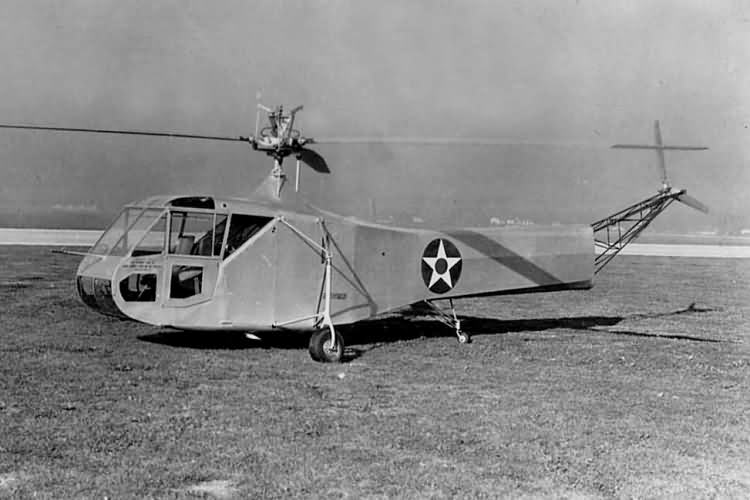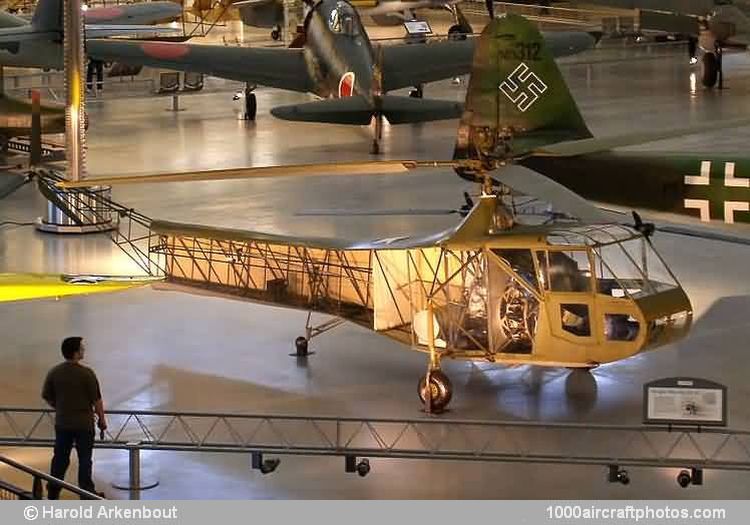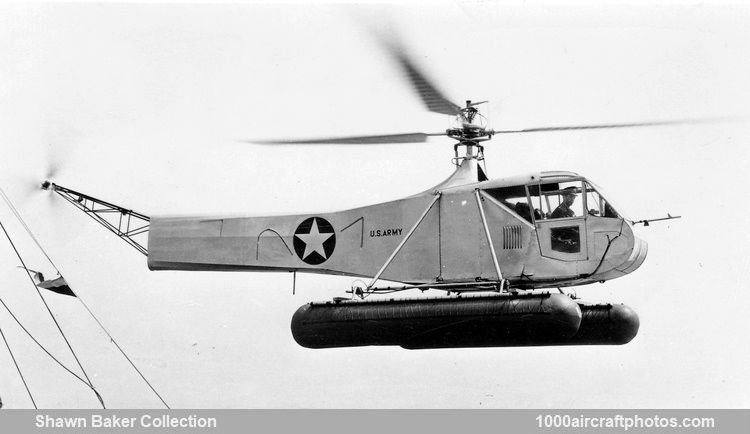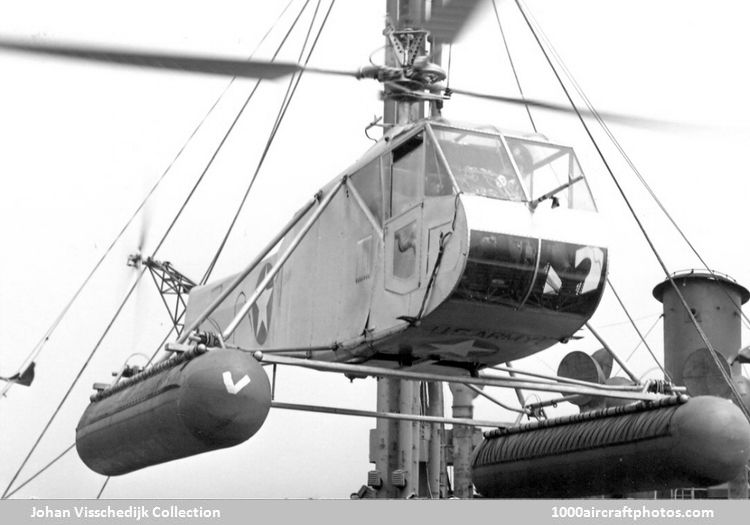08/15/2008. Remarks by Johan Visschedijk: "Designed by Igor Sikorsky and Michael Gluhareff the VS-316 was the world's first helicopter developed specifically for military use, and the first US rotary-wing type to be mass-produced. Derived from the VS-300 the side-by-side two-seat helicopter had a fabric covered fuselage, and was powered by a 160 hp Warner R-500-3 Super-Scarab seven-cylinder air-cooled radial engine. On December 17, 1940, the USAAC (renamed USAAF on June 20, 1941) ordered one prototype, designated XR-4 and assigned s/n 41-18874.
The first flight was made by Sikorsky Chief Test Pilot Charles 'Les' Morris at Stratford on January 14, 1942, followed by five more on that same day, the longest lasted just over seven min. The designation was changed to VS-316A following some modifications and on April 20 the aircraft was demonstrated at Stratford to the USAAF and proved it could hover with ground effect, and without at 100 ft (30 m), climb vertically to 500 ft (152 m), fly backwards, and reach a maximum speed of 70 mph (112 kmh), and an altitude of 5,000 ft (1,524 m).
For delivery, Les Morris flew the XR-4 from Stratford to the USAAF test center at Wright Field. From May 13 to May 17, 1942, it took sixteen hours and ten minutes of flight time and seventeen refueling stops to cover the 1,225 km (761 miles) distance. The XR-4 was formally accepted on May 30, tested for seven months and on January 5 1943 was found suitable for further testing. The USAAF ordered three YR-4A service demonstration aircraft, s/n 42-107234 to 42-107236, while the XR-4 was re-engined with the 175 hp R-550-1 Super-Scarab engine and redesignated XR-4C.
The XR-4C was donated to the Smithsonian in 1947."



